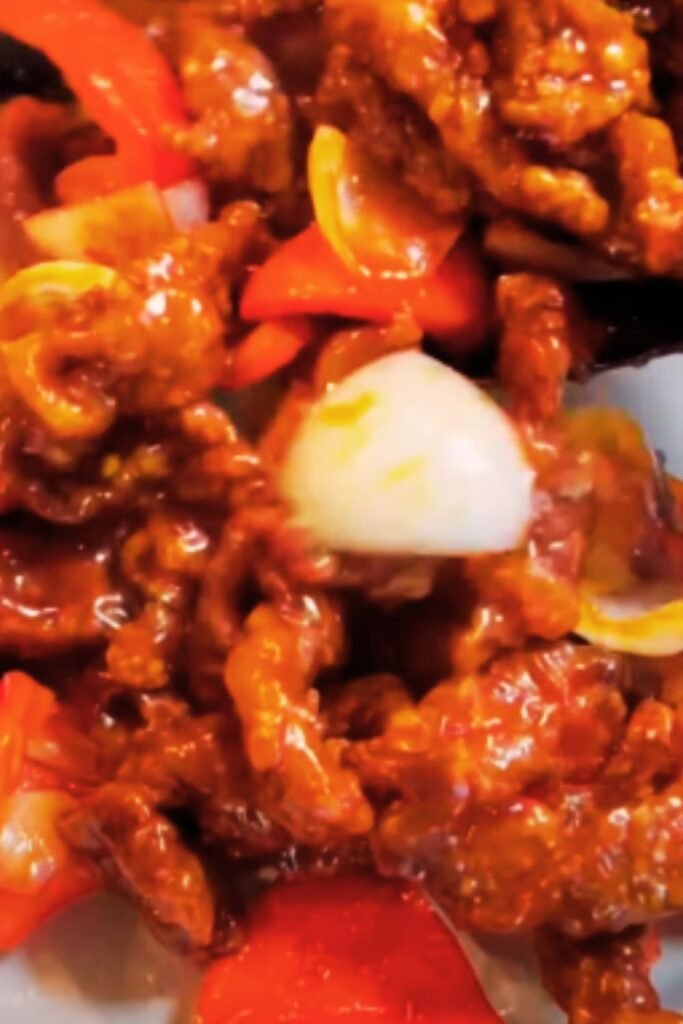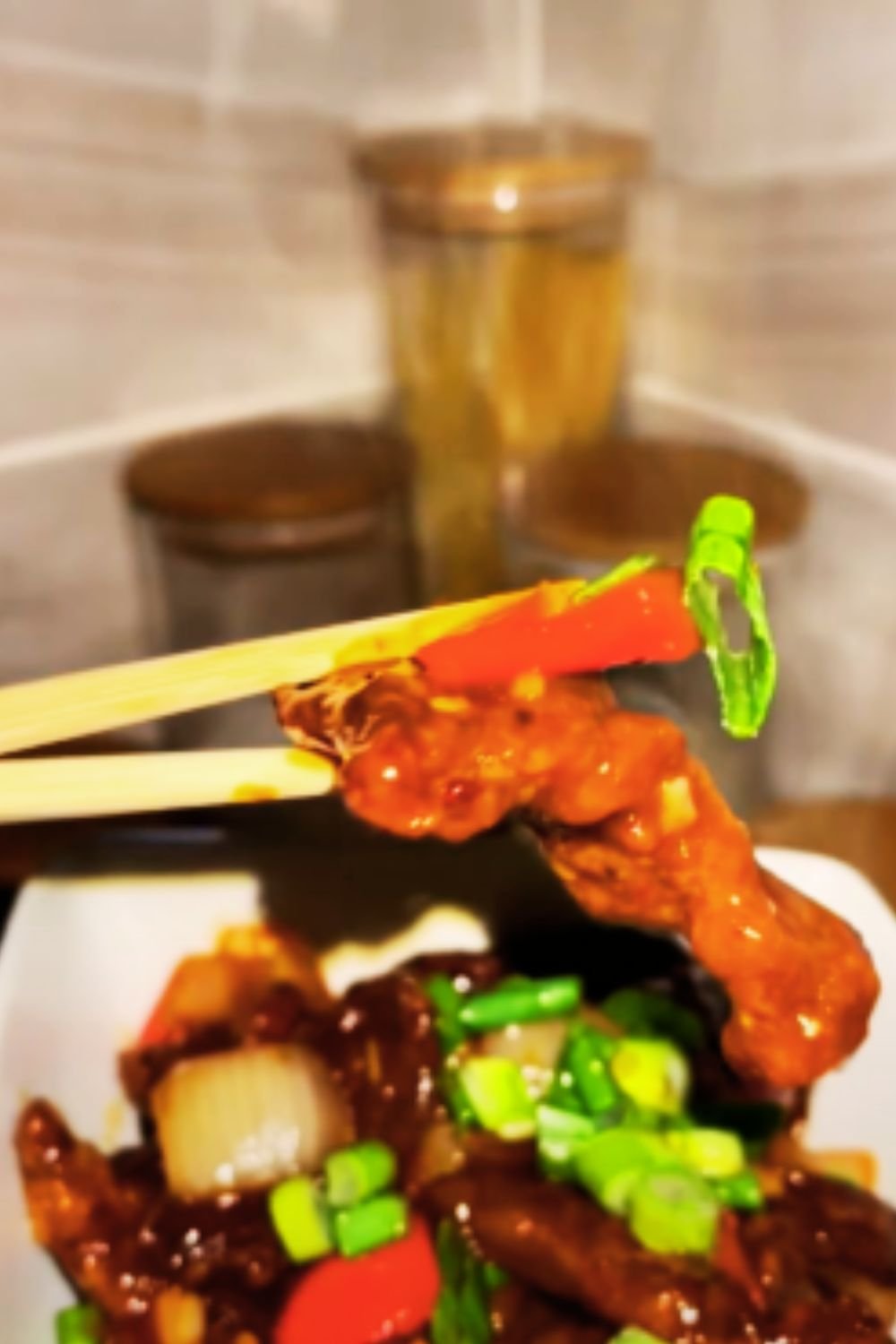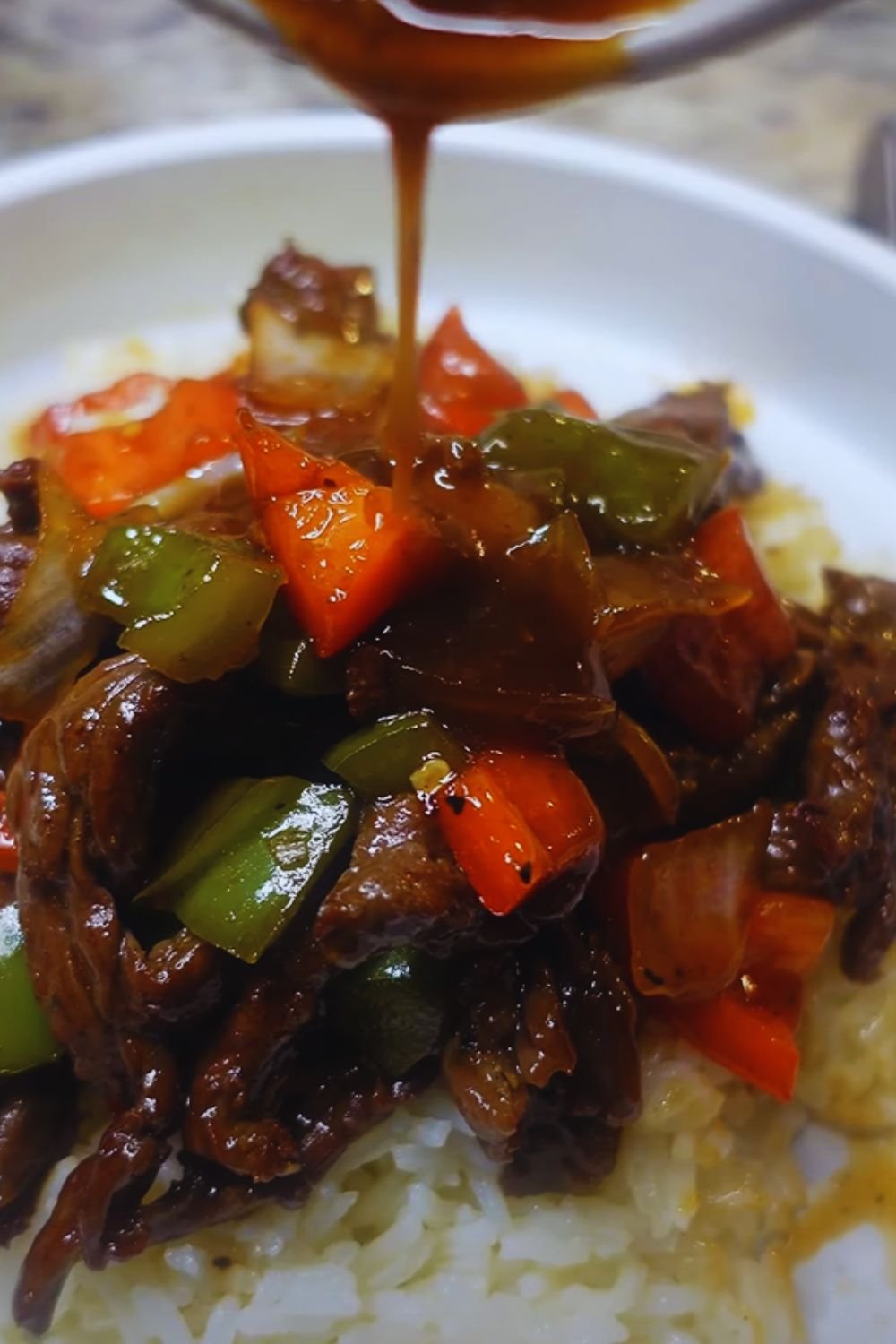If you’re anything like me, Panda Express’s Beijing Beef holds a special place in your heart. That perfect combination of crispy beef strips coated in a sweet-tangy sauce has been my go-to order for years. Today, I’m excited to share my perfected copycat recipe that I’ve developed after countless attempts to recreate this beloved dish at home.
What Makes Beijing Beef Special?
Before we dive into the recipe, let me tell you what makes this dish truly unique. Unlike other Chinese-American beef dishes, Beijing Beef combines three distinct texture elements: crispy-fried beef, crunchy vegetables, and a sauce that’s the perfect balance of sweet, tangy, and savory flavors. I’ve discovered that the secret lies in the double-frying technique and the precise sauce ingredients.
Essential Ingredients
For the Beef Marinade:
- 1 pound flank steak, sliced against the grain into 1/4-inch strips
- 2 tablespoons soy sauce
- 1 egg white
- 2 tablespoons cornstarch
- 1/4 teaspoon white pepper
For the Sauce:
- 1/2 cup sweet chili sauce
- 3 tablespoons ketchup
- 2 tablespoons rice vinegar
- 3 tablespoons sugar
- 2 tablespoons hoisin sauce
- 1/4 cup water
- 1 tablespoon cornstarch (for thickening)
For the Vegetables:
- 1 red bell pepper, julienned
- 1 white onion, sliced
- 3 green onions, cut into 2-inch pieces

Nutritional Information
| Nutrient | Amount per Serving |
|---|---|
| Calories | 385 |
| Protein | 26g |
| Carbohydrates | 42g |
| Fat | 15g |
| Fiber | 2g |
| Sugar | 28g |
| Sodium | 890mg |
| Iron | 15% DV |
Step-by-Step Instructions
Preparing the Beef
- Slice your flank steak against the grain into thin strips, about 1/4 inch thick
- In a medium bowl, combine soy sauce, egg white, cornstarch, and white pepper
- Add beef strips to the marinade and mix well
- Let it rest for 30 minutes at room temperature
Making the Sauce
- In a bowl, whisk together all sauce ingredients except cornstarch
- In a separate small bowl, mix cornstarch with 2 tablespoons of cold water
- Set both mixtures aside

Cooking Process
- Heat oil in a wok or deep fryer to 350°F (175°C)
- Working in batches, fry marinated beef for 2 minutes until golden
- Remove and drain on paper towels
- Increase oil temperature to 375°F (190°C)
- Refry beef for 1 minute until extra crispy
- In a separate wok or large pan, stir-fry vegetables until slightly charred
- Add sauce mixture and bring to a simmer
- Stir in cornstarch slurry until thickened
- Toss crispy beef with sauce and vegetables
Pro Tips From My Kitchen
After making this dish countless times, I’ve learned some valuable lessons:
- Temperature Control
- The oil temperature is crucial for achieving the perfect crispiness
- Use a thermometer for accuracy
- Don’t overcrowd the pan when frying
- Meat Selection
- Flank steak is ideal, but you can also use sirloin
- Always slice against the grain
- Partially freeze the meat for easier slicing
- Sauce Balance
- Adjust sweet chili sauce based on your preferred spice level
- The sauce should coat the back of a spoon when ready
- Add sauce to beef just before serving to maintain crispiness

Serving Suggestions
I love serving Beijing Beef with:
- Steamed white rice
- Fried rice
- Lo mein noodles
- Steamed broccoli
- Chinese-style green beans
Storage and Reheating
While this dish is best enjoyed fresh, you can store leftovers in an airtight container in the refrigerator for up to 3 days. To reheat:
- Oven Method (Recommended):
- Preheat to 350°F (175°C)
- Spread beef on a baking sheet
- Heat for 5-7 minutes until crispy
- Microwave Method:
- Heat in 30-second intervals
- Note: The beef won’t be as crispy
Common Questions and Answers
Q: Can I make this dish ahead of time?
A: While you can prepare the components separately, I recommend cooking the beef and assembling the dish just before serving to maintain the optimal texture.
Q: What’s the best cut of beef to use?
A: Flank steak is my top choice, but sirloin or skirt steak can work well too. The key is slicing against the grain.
Q: How spicy is this dish?
A: The heat level is mild to medium, coming primarily from the sweet chili sauce. You can adjust the spiciness by choosing a milder or hotter chili sauce.
Q: Can I make this gluten-free?
A: Yes! Use tamari instead of soy sauce and check that your hoisin sauce is gluten-free. All other ingredients are naturally gluten-free.
Q: Why double-fry the beef?
A: Double-frying creates an extra crispy exterior while maintaining a tender interior, similar to the restaurant version.
Troubleshooting Common Issues
- Beef Not Crispy Enough
- Oil temperature too low
- Overcrowded frying pan
- Didn’t double-fry
- Sauce Too Thick/Thin
- Too Thick: Add water tablespoon by time
- Too Thin: Mix in more cornstarch slurry
- Tough Beef
- Sliced with the grain instead of against
- Overcooked during frying
- Poor quality meat
Money-Saving Tips
- Buy beef in bulk when on sale and freeze portions
- Use generic brand condiments for the sauce
- Buy bell peppers when they’re in season
- Make extra sauce and store for future use
Recipe Variations
- Lighter Version
- Air fry the beef instead of deep frying
- Reduce sugar in sauce
- Add more vegetables
- Spicier Version
- Add dried red chilies
- Include sriracha in sauce
- Use hot chili oil for frying
- Vegetable-Heavy Version
- Add mushrooms
- Include snap peas
- Mix in baby corn
With this recipe, you’ll be able to enjoy restaurant-quality Beijing Beef from the comfort of your home. Remember, practice makes perfect, and don’t be afraid to adjust the seasonings to your taste. Happy cooking!


